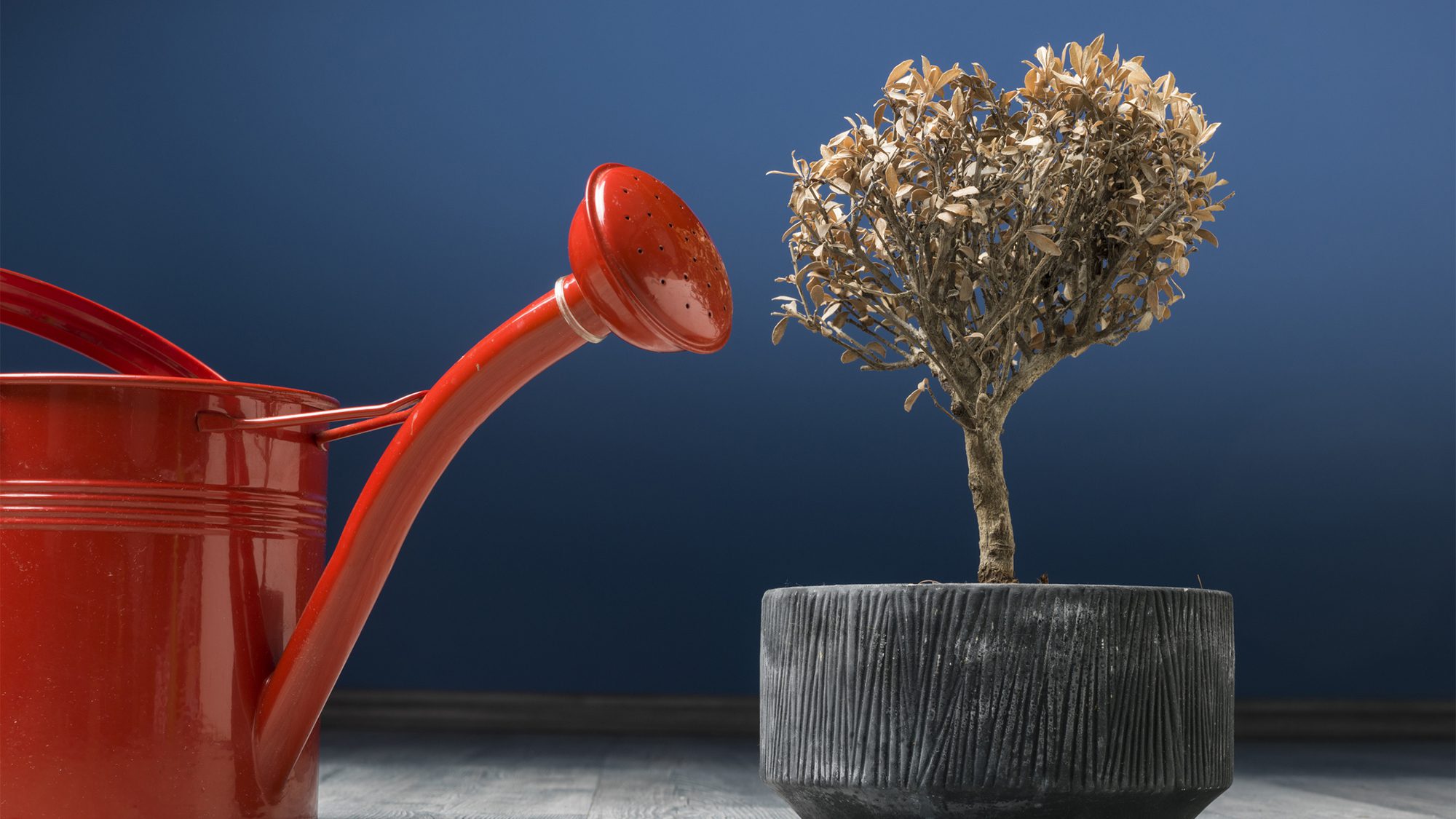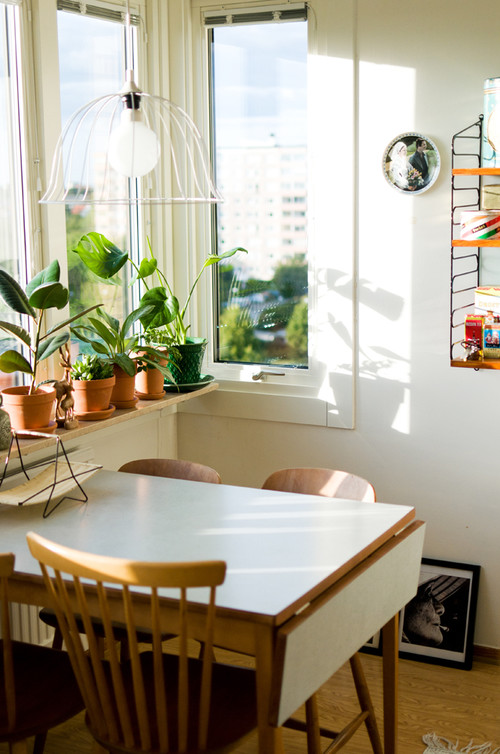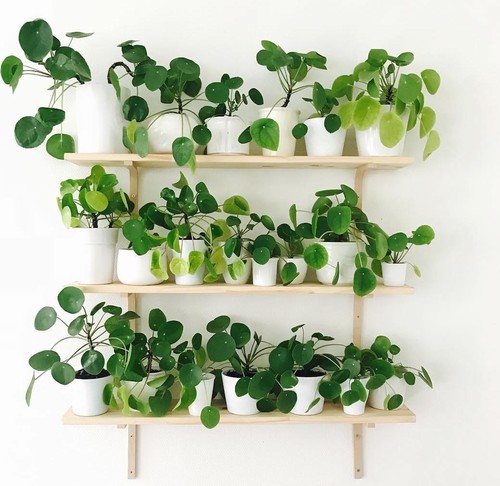
selimaksan/iStock
Many of us have been inspired by the gorgeous houseplants of Instagram—enough so to rush out and spend oodles creating “jungalows” of our own. But with winter in full swing, we proud plant owners are asking ourselves, “How am I supposed to keep these things alive all winter long?”
To help you keep your favorite plants safe—and avoid having to buy brand-new ones in the spring—we asked the experts about the biggest mistakes people make when it comes to caring for their houseplants in the winter. Read on for the top pitfalls that end up murdering your plant babies.
1. Not getting to know your plants
Don’t worry, we’re not about to make you sit down and have long chats with them à la Tom Hanks and Wilson the Volleyball in “Cast Away.” But you should take the time to get to know the plants you’re caring for—what they like and don’t like. At the very least, this means reading the label.
“One tip for houseplant owners is that they should simply research the requirements of their plants for the wintertime,” says Yanni Bills, creator of Let’s Talk With Plants. “Each type of plant has slight deviations from the general description of what needs to be done to protect them in the winter and help them thrive. A simple Google search can go a long way.”
2. Letting things get too dry
One of the best things you can do for your plants this winter is to make sure they don’t dry out, a common problem in homes where the central heating is on full blast for several months.
“Maintaining indoor humidity levels is easy to do,” says Mindy McIntosh-Shetter, botanist and author of “The Unofficial Outlander Book of Herbs.” “One approach is to simply mist the plant, but a better and longer-lasting technique is to make a simple humidity tray.”
Here’s how to do it: Take a saucer or plant tray and place stones, marbles, or pebbles inside. Next, fill the tray with water and place your plants on top of the stones. As the water evaporates, it creates a microclimate of moisture around your plants.
“At this point, the only thing you need to do is to make sure that water is always in the tray,” says McIntosh-Shetter.
3. Keeping your plants in dark corners…
This might seem like a no-brainer, but getting enough light can make or break your plant’s health during the dark winter months. Depending on where you live and how much sun you get, you might even consider investing in an artificial light to ensure your plants get what they need.
“The best option is to place your plants in front of a southern-facing window. If you do not have a southern-facing window, supplement your light with a plant light,” says Lisa Murano, gardening blogger and creator of Feathers in the Woods. “These are available with or without timers, and made with LEDs so they don’t ding your electric bill too much.”
You’ll want to aim for 12 to 14 hours of light total. Try turning on your lights at sundown for a few hours to make up for the shorter days.
4. … or placing them too close to windows
While your plants need light, placing them too close to windows could cause more harm than good. That’s because no matter how warm your home is, placing plants by a drafty window or door can be enough to kill them.
“The reason behind this is the fact that water molecules within the tissues of plant cells may freeze if the temperature drops too low, and that can cause lots of damage as ice crystals form and rupture cells within the plant’s leaves and roots,” Bills explains.
If you simply can’t avoid putting a plant far enough away from a drafty window, invest in mulch to insulate the soil, or a heat lamp to provide some level of warmth.
5. Moving your plants around
Once you’ve found a spot that checks all the boxes for your plants (sunny enough, not too cold), do yourself a favor: Leave them there!
“Plants can become unsettled if you’re constantly relocating them in different rooms,” says Sarah Macklin, creator of Dream of Home. “Orchids, particularly, will die if you move them too much.”
6. Using fertilizer
Although giving a slow-growing plant a little boost of fertilizer might seem like a good idea, the experts say otherwise.
“When it comes to fertilizing plants, it’s something that should be avoided altogether for plants that go dormant in the winter,” says Bills. “This is due to the fact that these types of plants—shrubs, perennials—have specific growth cycles that depend upon dormancy in the wintertime. If they’re given unnecessary quantities of fertilizer in the winter, they will be prompted to grow during a time that isn’t their growing season, which disrupts their growth cycle. This could lead to plants being burnt out by the time their expected growing season arrives, and can lead to very poor plant health.”
7. Overwatering
Another surefire way to kill your thriving houseplants is by inundating them with water. Much like the reasoning behind avoiding fertilization, a dormant plant also needs a lot less water than an actively growing one.
“Overwatering is one of the biggest killers of houseplants,” Bills says. “Overwatering can [also] create excess pools of water around the roots of a plant and may even cause the roots to rot or be eaten by fungus.”
8. Letting the dust settle
If you want to jump-start growth in a healthy, natural way, consider regularly dusting off the leaves, suggests Tatyana Rodriguez, creator of Florence’s Flowers.
“Plants tend to accumulate dust, so every once in a while you need to take a damp cloth and clean off the leaves,” she says. “We do this so the plant can better photosynthesize.”
The post These 8 Black-Thumb Mistakes Will Kill Your Houseplants This Winter appeared first on Real Estate News & Insights | realtor.com®.


No comments:
Post a Comment